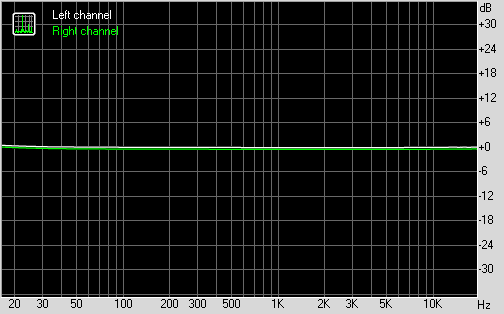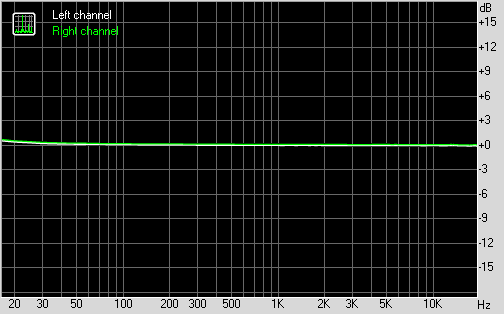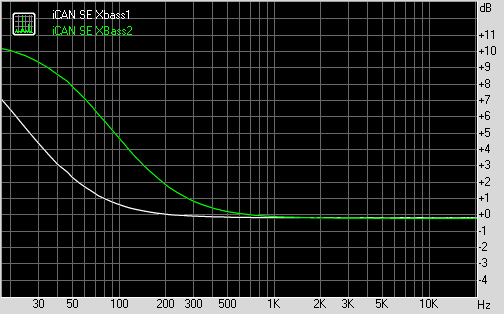
(nano iUSB3.0 package not show)
Spec

(Accessories not fully show)
Nano iUSB3.0
Output Voltage: 5V±0.5%
Output Current: 2.1A
Noise floor: 0.5uV (0.0000005V)
USB 3.0: Ultra-speed 5.0Gbps
Input Voltage: AC 100 – 240V, 50/60Hz (iFi iPower included)
Power consumption: Less than 15W (includes powered USB device)
Dimensions: 87(l) x 68(w) x 28(h) mm
Weight: 141g (0.31 lbs)

Micro iDAC2
Input: USB3.0 (USB2.0 compatible)
Output:
SPDIF RCA (only PCM up to 192KHz)
Audio RCA
3.5mm Headphone
Formats:
44.1/48/88.2/96/176.4/192/384KHz PCM
2.8/3.1/5.6/6.2/11.2/12.4MHz DSD
353/384KHz DXD
DAC: Bit-Perfect DSD & DXD DAC by Burr Brown (1-DAC Chip; 2-Channel; 4 Signals)
Filters:
-PCM: Bit-Perfect/Minimum Phase/Standard, Digital filters selectable
-DSD: Extreme/Extended/Standard, Analogue filters selectable
-DXD: Bit-Perfect Processing, Fixed Analogue filter
Line Section:
Output: 2.1V (+/-0.05V) fixed
Zout: Under 39 Ohm
SNR: Over 114dB (A) @ 0dBFS
THD+N:
Under 0.0025% @ 0dBFS (100k Load)
Under 0.025% @ 0dBFS (600R Load)
Headphone Section:
Output:
Over 350mW (2.40V) into 16R (Less than 10% THD+N)
Over 34mW (3.20V) into 300R (Less than 0.1% THD+N)
Zout: Under 2 Ohm
THD+N: Under 0.0025% (1V into 16 Ohm, 0dBFS)
SNR: Over 114dBA (3.2V into 16 Ohm, 0dBFS)
Power consumption: Less than 1.5W
Dimensions: 158(l) x 68(w) x 28(h) mm
Weight: 265g (0.58 lbs)

Micro iCAN SE
EQ: Two levels selectable 3D Holographic Sound and XBass
Gain: 0dB, 12dB and 24dB user-selectable. Full discrete, Class A
Buffer Stage: TPA6120A2
SNR: Over 123dB (A)
THD: Under 0.003% (400mV/150R)
Frequency Response: 0.5Hz to 500KHz (-3dB)
Output Impedance: Under 1 ohm
Output Power: Over 4000mW (16Ω)
Output Voltage: Over 10V (over 600Ω)
Input Voltage: AC 100 – 240V, 50/60Hz
Power Consumption: Under 5W idle, 12W max.
Dimensions: 158(l) x 68(w) x 28(h) mm
Weight: 216g (0.48 lbs)
Accessories and Build Quality
Design, accessories and build quality wise, the new offerings are pretty much top notch and on par with their older sibling. I have said in the past that I am not that biggest fans for iFi long and narrow Micro casing, but that has become part of iFi identity. With micro iDAC2, you will get some rubber feet, a short USB cable and RCA cable. Micro iCAN SE, there are the power adapter, short RCA cable, 6.4mm-to-3.5mm stereo adapter, a flat head screw driver for adjusting gain, 3.5mm interconnecting cable and rubber feet. With nano iUSB3.0, there are USB3.0 cable, rubber feet and power adapter. One thing to note is that the power adapter of all of current iFi has been upgraded to the iPower adapter, which offer even cleaner power than the original ULN adapter. To nit-pick, I am not too fond of the new customized 3M rubber feet that is lower than the original 3M feet, making it harder to stack the iDAC3 and iCAN SE on top of each other as the metal casing are touching each other. At the end, I end up getting some taller original 3M rubber feet so I can stack them up for a cleaner looking. Of course, whether this will bother you or not totally depends on how you like to arrange your iFi gears.
Gain and Hiss
Line-out on iDAC2 is the fairly standard 1.98Vrms, headphone-out gain is just over 5dB, or about 3.6Vrms at max. Gain on iCAN SE is however selectable at either 0dB, 12dB or 24dB. Assuming iDAC2 as source, most headphone and IEM will be more than enough with 0dB gain. Hard-to-drive full sized might benefit from the 12dB gain, where 24dB gain with just over 11Vrms output is probably reserved for really low sensitive headphones.
Hiss is very well behaved on the IDAC2. With the hiss-prone Shure SE530, I didn’t notice any hiss until around 2~3 o’clock on the volume knob – which is of course impossible to actually listen on such a high volume during music playback. I think it is safe to say there is little to no chance you will notice any hiss with sensitive IEM on normal use.
Hiss on iCAN SE is mostly positive. I say ‘mostly’ because as far as hiss goes, it is on par with the original iCAN where low level hiss is only noticeable with volume knob going pass 12 o’clock. But I also noticed the 15V iPower seems to be more sensitive to voltage irregularity and ground loop from the main, which could give a very faint switching noise in rare occasions. If I switched to using the 9V iPower to power the iCAN SE, the faint switching noise will go away. Not really sure if that’s due to the particular 15V iPower adapter I have as I don’t have another 15V iPower adapter to compare it to, plus I can’t replicate the situation easily. Will probably have to wait till I get another 15V iPower to double check though I think it is more likely a freak incident.
Sound Quality
As usual, we start with the look at some basic measurement. As far as RMAA goes, both iDAC2 and iCAN SE pass with flying color with flat frequency response end-to-end, and great looking numbers on crosstalk, SNR and IMD. Then again, these result are to be expected, given the original IDAC and iCAN already measure quite well. Output impedance on iDAC2 headphone-out is measured and calculated to about 1.9ohm, in line with the listed spec, and it has plenty of output power to my dummy load. iCAN SE fairs even better with just 0.9ohm output impedance and higher output power. All and all, the technical side of both iDAC2 and iCAN SE seem very solid.


Let begin with iDAC2. Besides sharing the same name with the original iDAC, there is really nothing really similar between the two. Where the original iDAC is meant to be a step beyond entry level USB DAC, the iDAC2 simply takes it to the next level. Instead of the entry level ESS chip, the iDAC2 uses the same DAC chip as better sounding iDSD series. I think it is fair to say iDAC2 is really more of a desktop version the iDSD series, where performance is in between the nano iDSD and Micro iDSD. On the DAC section, it shares many of the same features as nano iDSD like native DSD playback and filter selection (see my micro iDSD review for more detail on these features). On the analog section, it is a noticeable improvement over nano iDSD but not as robust as the flagship micro iDSD. One of the minor complaint I have with nano iDSD is that its headphone amp section is kind of the weakest link. But that is not the case on iDAC2. The bigger size and no need of portability means a better implemented analog section after than DAC stage, which no longer give me the feeling that there is a noticeable weak spot in the chain. While it is still not the best sounding amp section you will find on a DAC/amp, it is at least not a let-down in anyway and should drive most headphone quite well. I would think the word ‘content’ is what coming to my mind when using iDAC2 as a standalone unit – that I can be quite happy to use it as it is and there isn’t the need to ‘fix’ it in some way to make it better. Where with the original iDAC, I am more incline to use it with the iCAN because I know on the back of my head that I want just a bit more.

Micro iDAC2 FR curve
So how is the subjective difference between iDAC2 and iDAC? Gone is the clean, slightly sterile sound of the ESS chip and in is the more musical presentation of the Burr Brown DAC that I am quite fond of. Same can be said on the headphone amp section as well. While it is still reference flat on FR curve, the overall tonal is richer and more musical than the colder sounding iDAC’s headphone-out. The dual-mono like implementation of two MAX97220 headphone driver gives plenty of power and control. The lower in overall gain makes it a bit more IEM friendly than the iDAC. It doesn’t have the output to handle really hard-to-drive headphone but that is what iCAN SE is for. All and all, the iDAC2 is a solid upgrade over the original model. I’ll dare to even say it is almost a quantum leap in design.


Different from the radical change between iDAC and iDAC2, there are more similarities between iCAN SE and iCAN. Their basic topology shares the same DNA with TubeState Class A discrete gain stage followed by TPA6120A2 headphone buffer stage. Of course, the excellent 3D Holographic Sound (3DHS) and XBass are there as well. The main difference is that the iCAN SE, with a higher voltage supply from the 15V iPower adapter, can pump out 10 times the power (4W vs. 0.4W) over the same 16ohm load when compared to the original iCAN as well as having a higher maximum gain for the most demanding of headphone.

Micro iCAN SE FR curve
So does the iCAN SE sounds the same as the already great iCAN? Well, yes and no. It is easy to tell that iCAN SE inheres the same underlying tonality and transparent presentation from iCAN, but there are a few subtle improvement. First, the overall image is about 10% larger on the iCAN SE, which isn’t much but enough to paint out a larger sonic picture and result in a slight improvement over positioning. Secondly, the extra power really helps to tighten up the presentation with crispier top notes and harder hitting low notes, which gives better definition. These improvements are not night and day by any mean, but enough to be noticeable in a volume matched comparison. I guess it is rather befitting that iFi has managed to make the iCAN SE even more ‘special’ than the original iCAN.

iCAN SE's XBass
Lastly, the implementation on iCAN SE’s 3DHS and XBass seem to be identical to that of the original iCAN. 3DHS can’t be easily measured using my equipment but I did measure the XBass EQ and they are indeed the same as the original iCAN. 3DHS, on my ears, also sounds extremely similar (if not identical) too. Like they said - if it didn’t break, don’t fix it. I am glad to see iFi has kept the excellent 3DHS and XBass intact.


I have said on my original iUSB Power’s review that I didn’t actually get it for the use with the original iDAC, though the end result does show improvement for the pairing. Compare to the iUSB Power for only cleaning up the USB power line, the new nano iUSB3.0 is also a fully suited up USB3.0 hub that not only clean up power line, but also clean up the USB data signal as well as supporting BC1.2 profile. It is pretty much as audiophile as USB hub can ever be. Of course, whether you will detect an improvement with or without nano iUSB3.0 depends on how good or bad your PC’s USB connection is. If it doesn’t have much problem to begin with, then you might not notice much improvement. If it does have problem, then the nano iUSB3.0 will prove to be a good fix. My main use of the nano iUSB3.0 is to connect my micro iDSD to the PC so the iDSD can get a clean BC1.2 power supply line and won’t drain its internal battery over time - and It does a fine job there. Like the original iUSB Power, the nano iUSB3.0 is at best a minor optimization to your rig after you have improved on other aspects. It will worth it if you already own a mid to higher end USB DAC, but probably not the best idea to pair it with a cheap USB DAC and expect it to do miracle.

From left: micro iDAC2, nano iUSB3.0, and micro iCAN SE
Summery
Since my review for iDAC, iCAN and iUSB Power some 3 years ago, the market for desktop audiophiles gear has blossomed and then somewhat shifted more toward smartphone oriented OTG products. It is rather a delight to see iFi Audio has continued to refine its nano and micro products line-up and push the envelope of offering audio gear with exceptionally good price-performance ratio, not just a mad dash to keep releasing the latest and greatest purely to meet the bottom line.
A thanks to iFi Audio for the iDAC2 and iCAN SE sample.





